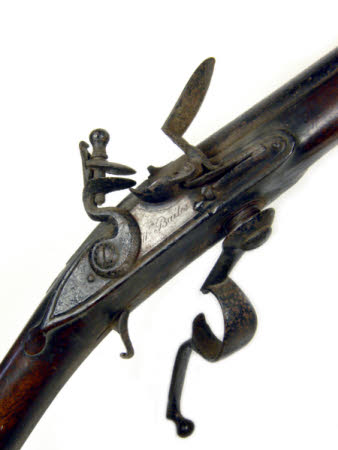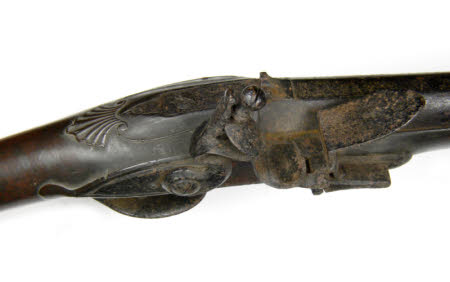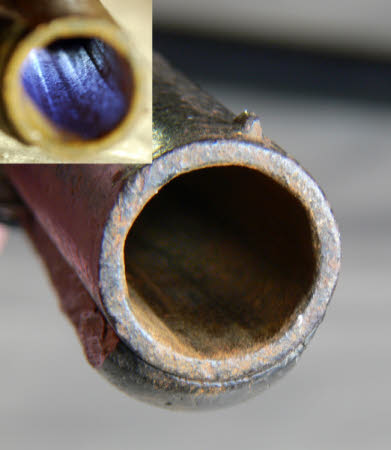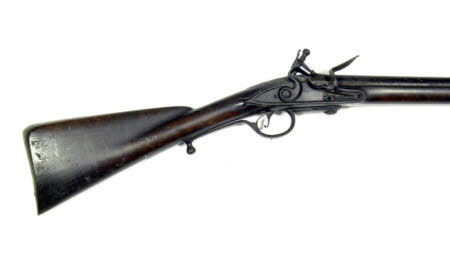Flintlock rifle
William Bailes (fl.1735 - 1766)
Category
Arms and armour
Date
circa 1750
Materials
iron, wood, brass
Measurements
1255 mm (Length)850 mm (Length)
Place of origin
London
Order this imageCollection
Sizergh Castle, Cumbria
NT 997798
Summary
Breech-loading flintlock sporting gun, c1750, by William Bailes, gunmaker, London (1735-1766).
Full description
Very rare breech-loading flintlock sporting gun, c1750, by William Bailes, gunmaker, London (1735-1766). William Bailes was worked in Tyburn Road, London (later renamed Oxford Street) in 1743 until 1748 when he moved his business to Great Russell Street, Bloomsbury. Bailes was not a member of the Gunmakers Company although non-members could have their guns proved (tested) for a fee and stamped with the addition mark, F under a crown (Foreigners Mark - not a member of the Gunmakers Company). Bailes is noted for his high quality firearms, many of unusual design. He produced sporting guns for the elite families of the day, both for those in London and the aristocracy of England. He died in 1766. This rifle, probably intended for shooting deer, is loaded from the breech. The trigger guard forms a removal able screw plug which is rotated and unscrewed to reveal an opening through the underside of the gun into the barrel. Round iron barrel, slightly tapered and with a flattened top at the breech. The breech fitted with a raised V sight and having a bead foresight at the muzzle. The breech also stamped with proof marks of the London Gunmakers Company and the Foreigners mark. Engraved barrel tang. Retained to the stock by 3 barrel pins (2 missing). There is no provision for ramrod. The metal rusted and covered with black paint. Length 85.2cm. Calibre 18mm. Walnut full-stock with handrail form butt. Rococo shell carving behind barrel tang and some profile carving around the lock recess and left side of gun. A small section of wood is missing from the forestock. Engraved brass furniture comprising; buttplate and flat side-plate (with retaining screw). The iron trigger guard is formed with a long tang with protruding handle, the forward part of the guard incorporating a removable screw plug, allowing breech-loading from underside of barrel. The trigger plate is extended both at the front and rear; the front providing a seal around the screw breech opening; the rear providing a small raised stud to secure the handle of the removal able trigger guard. Trigger with scroll tip. The metal rusted and covered with black paint. Flintlock of flat form with bevelled edges, boarder engraved and signed in script form, W. BAILES. Retained to the stock by 2 sidenails. The metal rusted and covered with black paint. Overall length: 125.5cm
Marks and inscriptions
Barrel breech - left: London Gunmakers Company proof marks GP and V Foreigner mark F under a crown Lockplate: W. Bailes
Makers and roles
William Bailes (fl.1735 - 1766), gunsmith
References
Blackmore, 1986: Howard Blackmore: A Dictionary of London Gunmakers 1350-1850 Neal & Back, 1989: William Keith Neal & David Back, Griffin & Tow & W. Bailes




